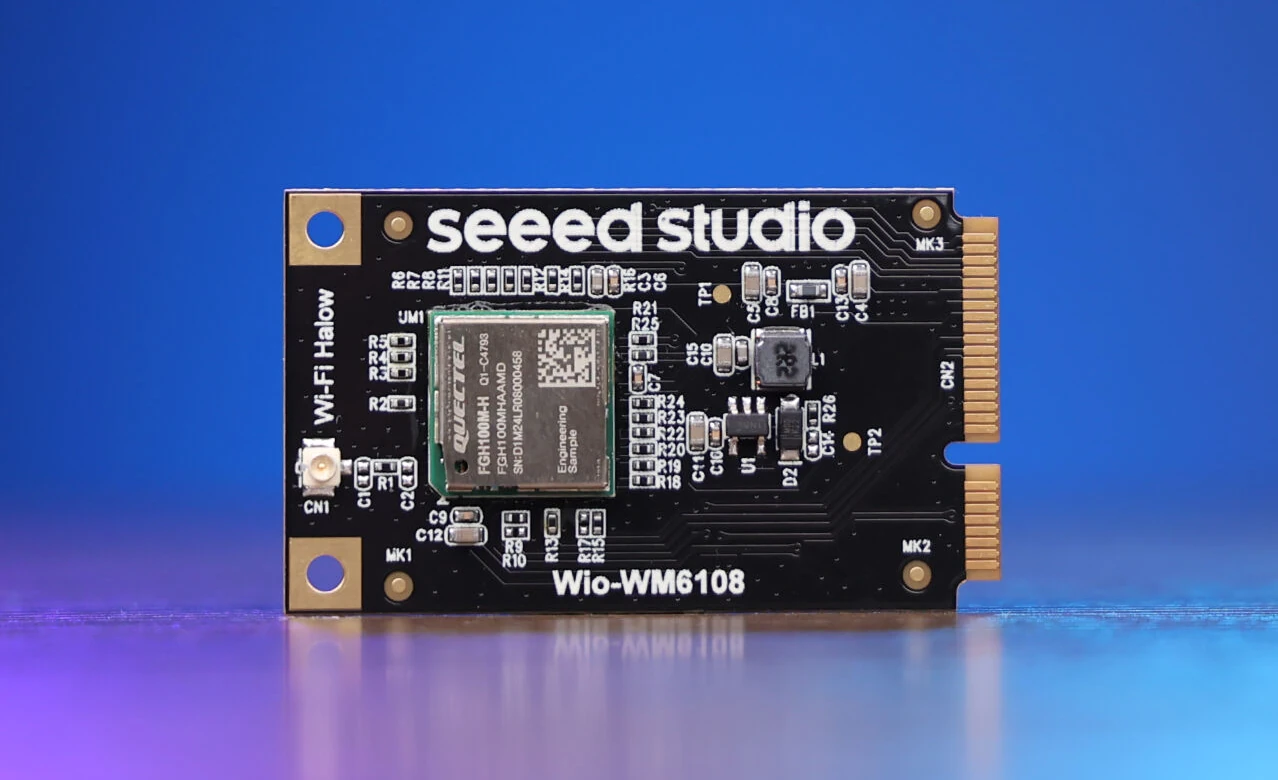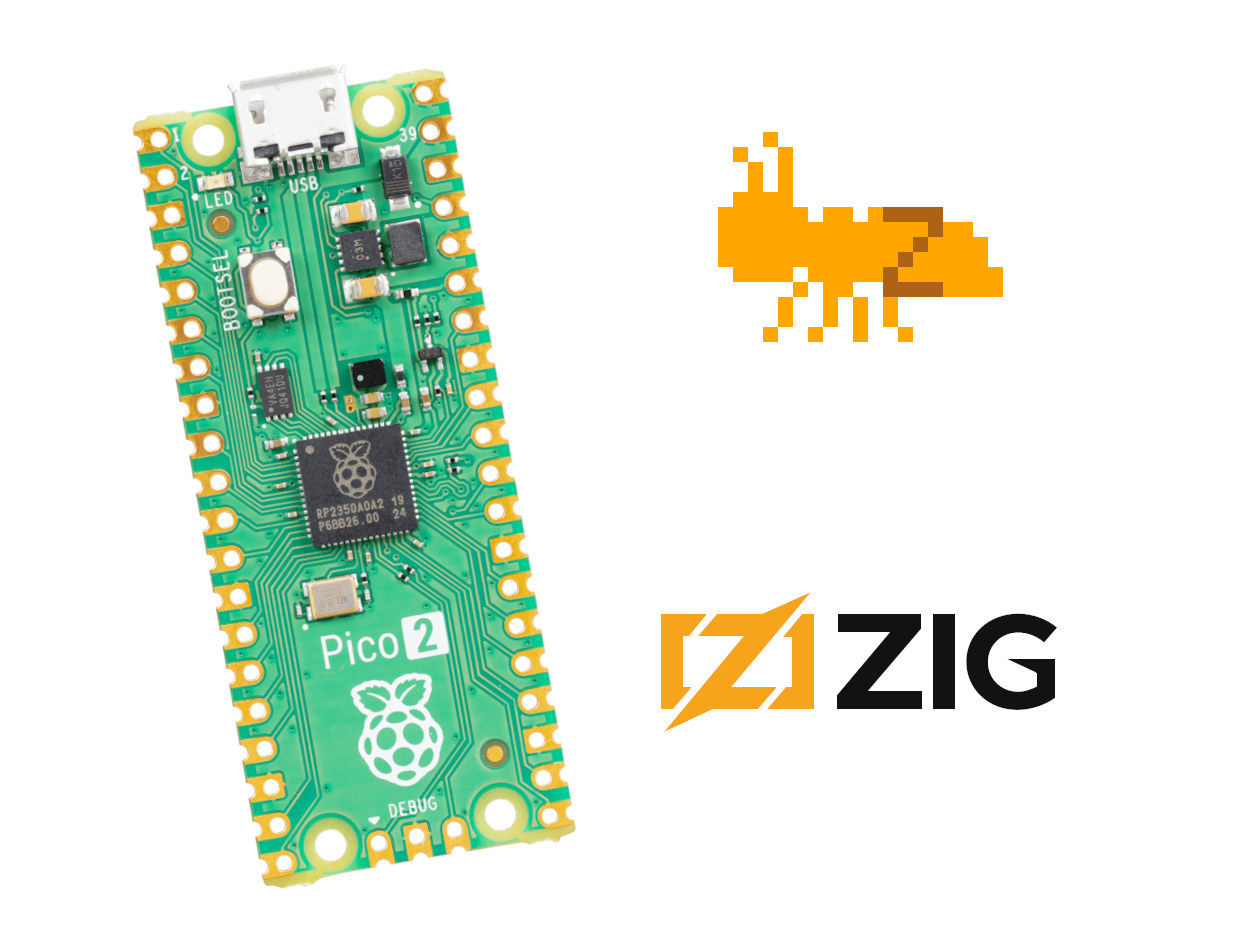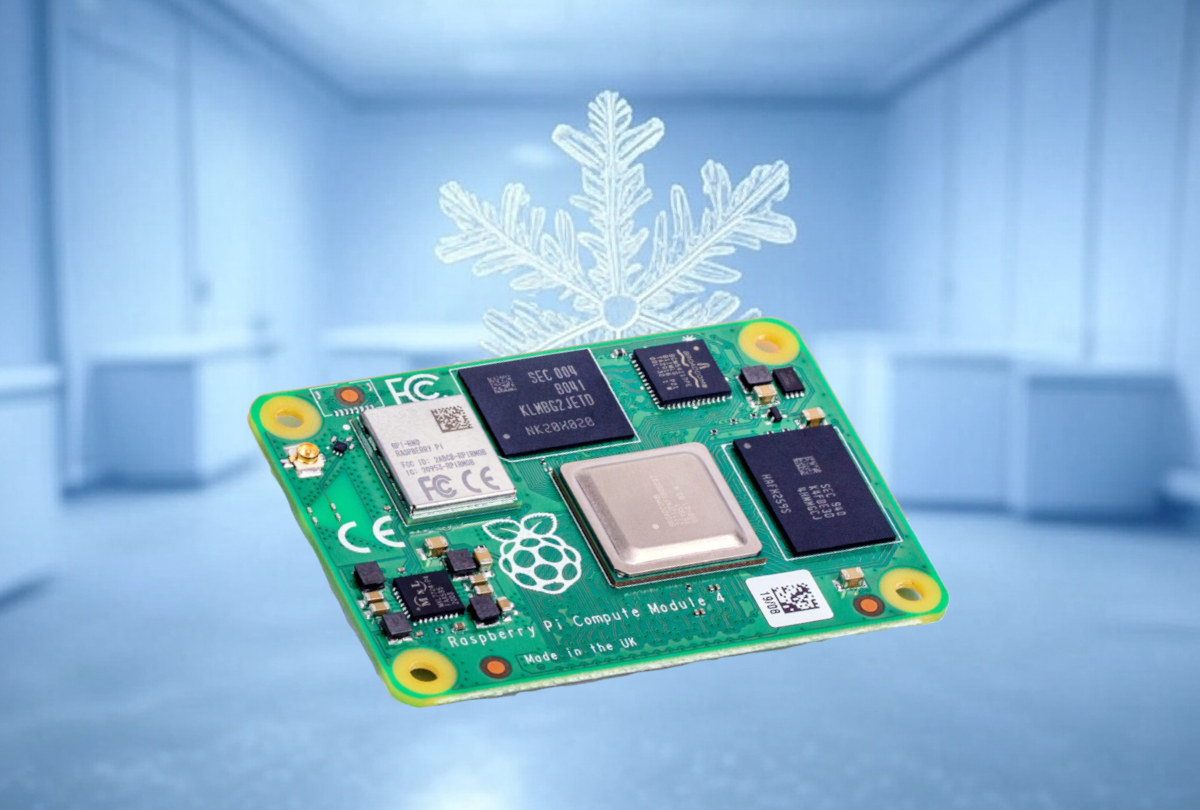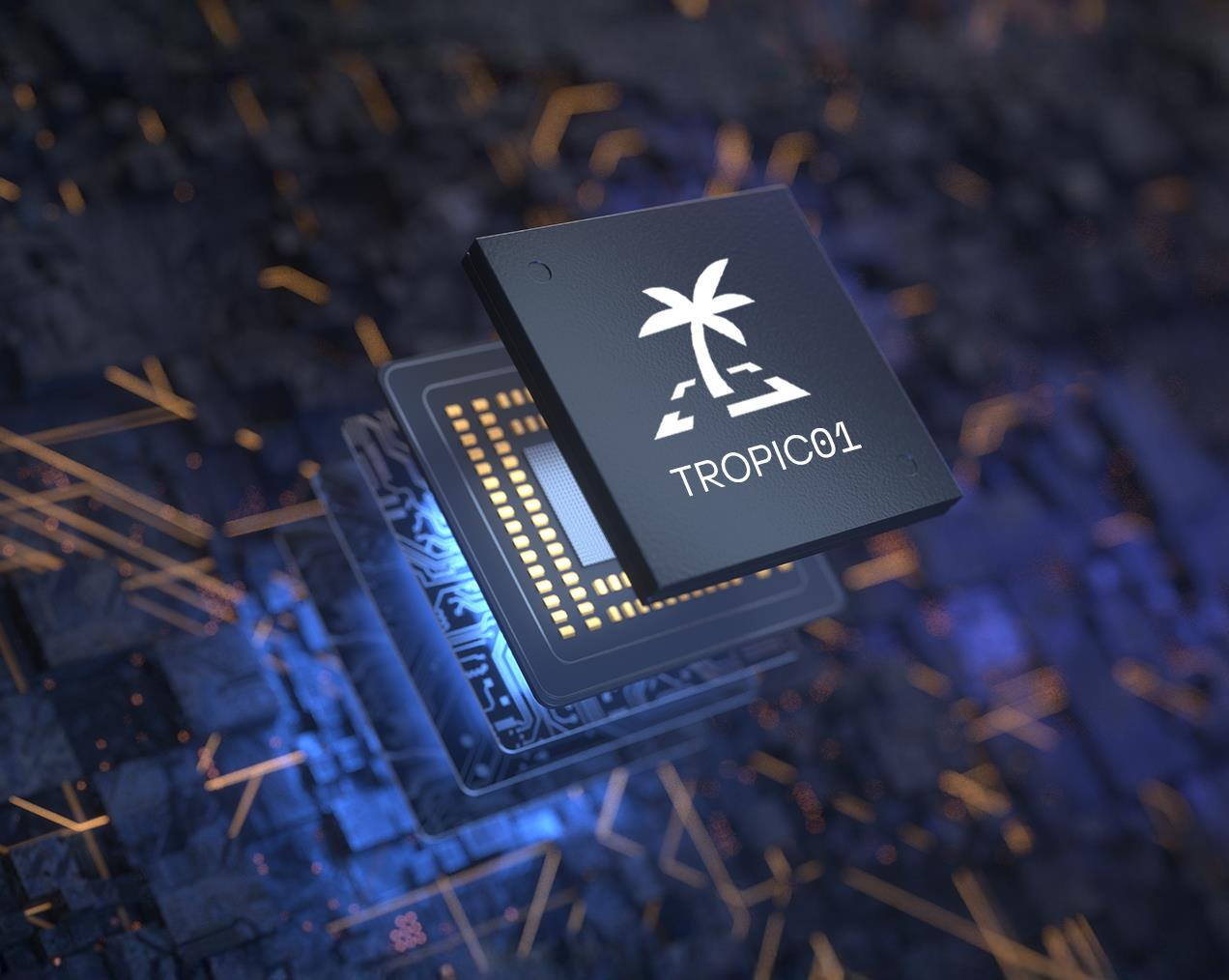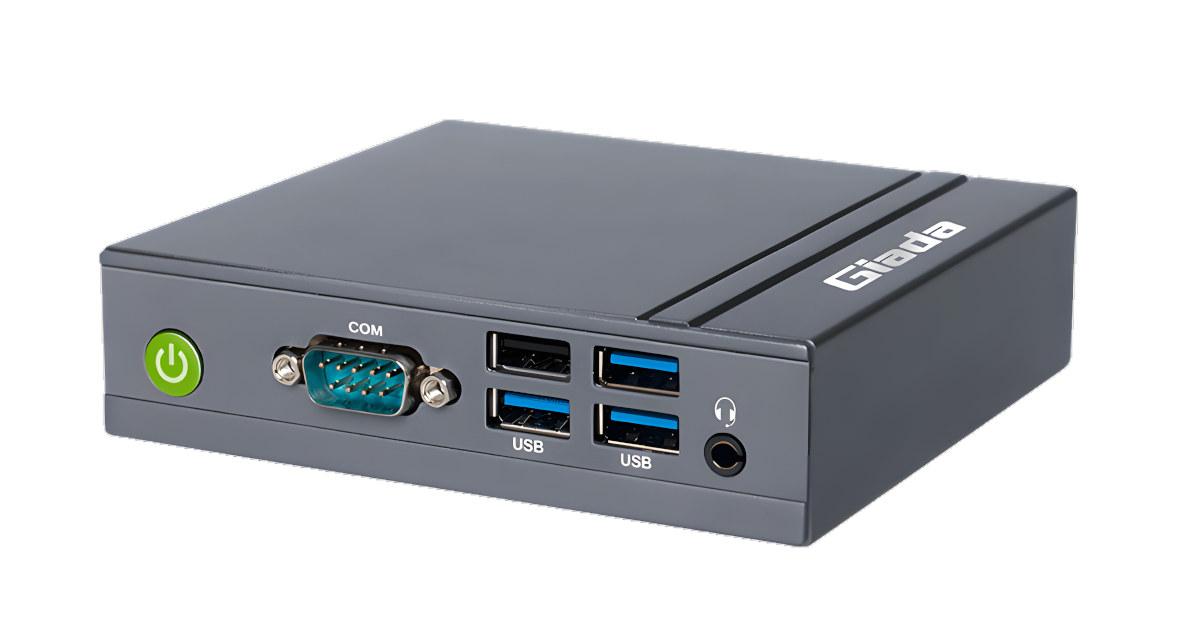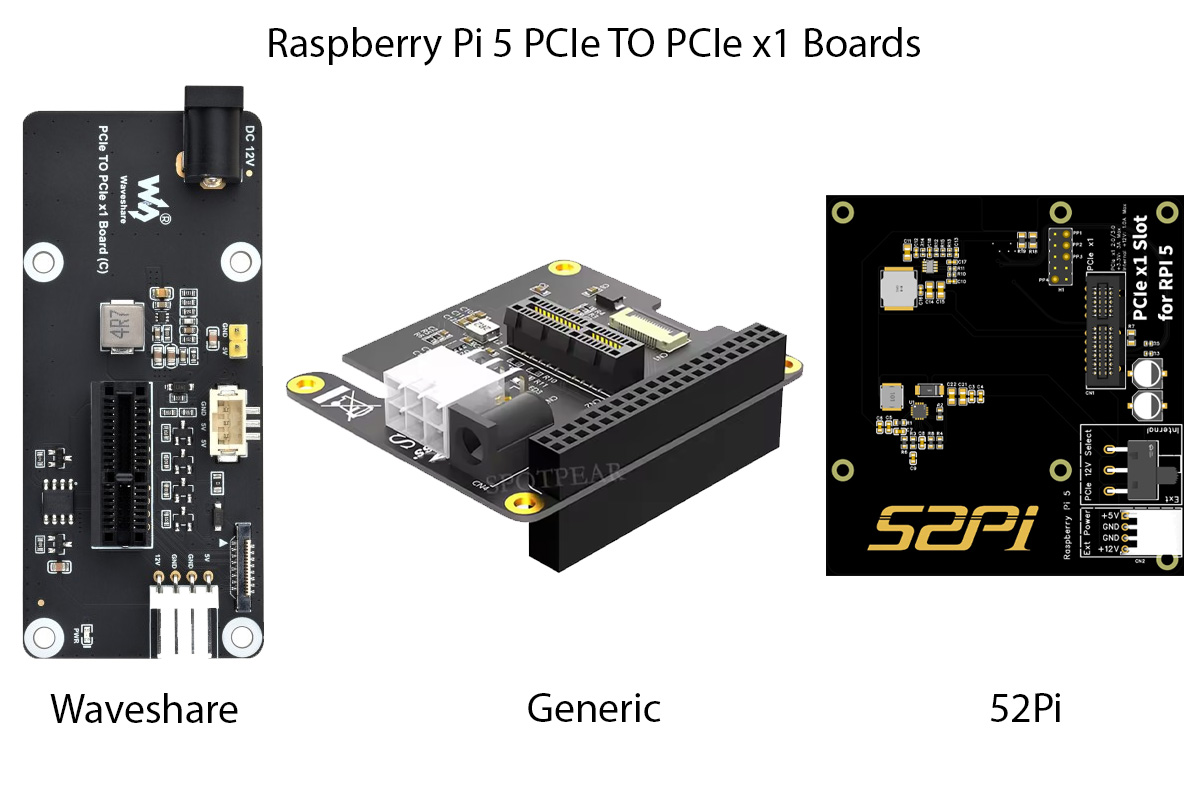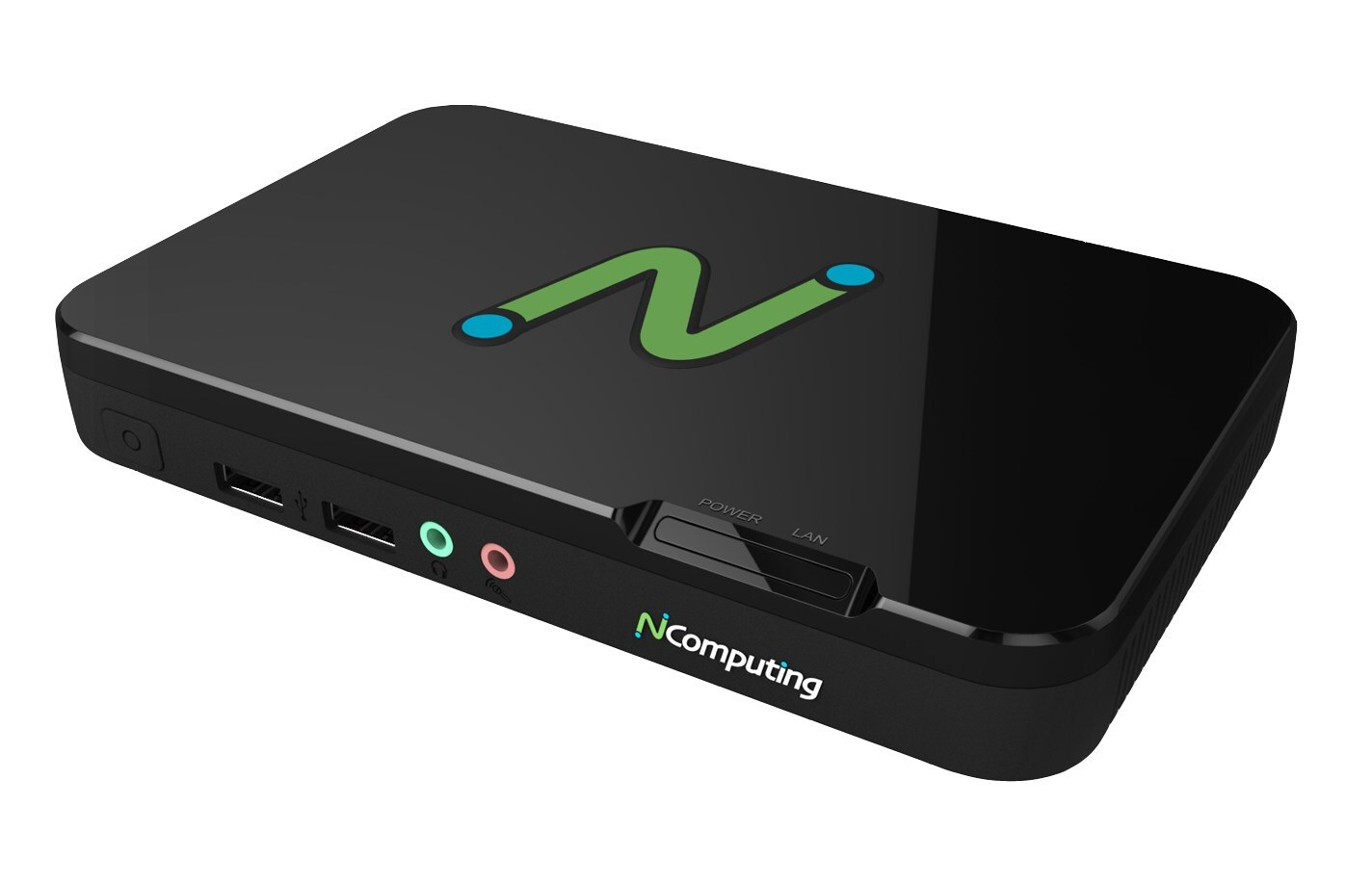Seeed Studio has launched two 900 MHz WiFi HaLow modules for long-range, low-power communication based on Quectel FGH100M-H: the Wio-WM6180 Wi-Fi HaLow mini-PCIe module designed to be installed in hardware such as OpenWrt routers or even Raspberry Pi SBCs, and the Wi-Fi HaLow module for Seeed Studio XIAO designed to take XIAO boards with Espressif, Raspberry Pi, or Nordic Semi microcontrollers. These solutions can be useful for Smart Home devices, industrial automation, Smart City infrastructure, Smart Agriculture, and environmental monitoring systems. The most typical use cases are WiFi HaLow cameras with up to one kilometer range. Wio-WM6180 Wi-Fi HaLow mini-PCIe Module Specifications: Quectel FGH100M-H Wi-Fi HaLow module compliant with IEEE 802.11ah standard. Chipset – Morse Micro MM6108 Wi-Fi Frequency Band – 902–928 MHz Operating mode – Access Point (AP) or Station (STA) Modulation – OFDM, BPSK, QPSK, 16QAM, 64QAM Data Rate – Up to 32.5Mbps link rate Range – Up […]
Home Assistant 2025.3 released with dashboard view headers, tile card improvements, better SmartThings integration
The popular Home Assistant has gotten an update with version 2025.3 that brings dashboard view headers, several tile card improvements, better map clustering, streamed responses from LLMs, and improved SmartThings integrations. Let’s have a look at some of the improvements starting with dashboard view headers which allow users to add a title and welcoming text to dashboards using Markdown and templates. You can also add badges next to the headers. Home Assistant 2025.3 also brings plenty of improvements to tile cards: Adding a circular background around tiles that perform actions, and leaving the ones that just show extra information without a circle Features of a tile card can now be positioned inline in the tile card (e.g. on/off button) New features: switch toggle, counter toggle (to increase, decrease, or reset a counter entity), animations when hovering over atile card Editor improvements for ease of use The new version of Home […]
Zant – An open-source Zig SDK for neural network deployment on microcontrollers
Zant is an open-source, cross-platform SDK written in Zig and designed to simplify deploying Neural Networks (NN) on microcontrollers. It comprises a suite of tools to import, optimize, and deploy NNs to low-end hardware. The developers behind the project developed Zant (formerly known as Zig-ant) after noticing many microcontrollers lacked robust deep learning libraries, and made sure it would be on various platforms such as ARM Cortex-M or RISC-V microcontrollers, or even x86 targets. Contrary to platforms like Edge Impulse that focus on network creation, Zant is about deployment and outputs a static, highly optimized library ready to be integrated into any existing work stack. Zant highlights: Optimized Performance – Supports quantization, pruning, and hardware acceleration techniques such as SIMD and GPU offloading. Low memory footprint – Zant employs memory pooling, static allocation, and buffer optimization to work on resources-constrained targets. Ease of Integration: With a modular design, clear APIs, […]
Raspberry Pi Compute Module 4 adds industrial/extended temperature range from -40°C to +85°C
Some Raspberry Pi Compute Module 4 are now available in the industrial/extended temperature operating from -40°C to +85°C, suitable for outdoor applications in cold climates and (some) cold storage solutions that require sub -20°C temperature. When the Raspberry Pi Compute Module 4 was launched in 2020, Raspberry Pi did not provide an operating temperature range. Since then, the Raspberry CM4 has been qualified to operate in the -20°C to +85°C range, which is suitable for most applications but not all. Eben Upton has now announced the availability of Raspberry Pi Compute Module 4 variants with extended temperature range. Raspberry Pi Compute Module 4 specifications (as of March 2025): SoC – Broadcom BCM2711 quad-core Cortex-A72 processor @ 1.5 GHz with VideoCore VI GPU System Memory – 1GB, 2GB, 4GB, or 8GB LPDDR4-3200 SDRAM Storage – CM4: 4, 8, 16, or 32GB eMMC flash up to 100MB/s; CM4 Lite: No storage device […]
Tropic Square TROPIC01 is an auditable, open architecture, tamper-proof RISC-V secure element (SE) for IoT and microcontrollers
Tropic Square TROPIC01 is an auditable, open architecture, tamper-proof RISC-V based secure element (SE) designed to interface with microcontrollers in products such as hardware wallets, authentication solutions, biometric wallets, medical devices, and other IoT solutions. There are plenty of secure elements on the market, but their design is usually closed-source, so the design can’t be easily verified by third parties and flaws may remain hidden even when discovered. With its open designs, potentially flaws in the TROPIC01 can easily be found, disclosed, and fixed by the community, and such verifiable design improved trust in the security of the solution. TOPIC01 secure element specifications: CPU core – RISC-V IBEX Controller Core with secure firmware updates and customizable FW upon request Memory OTP to store x.509 certificate and keys Flash to store general purpose and PIN verification data Memory address scrambling On-the-fly encryption Error correction code protection Communication Interface SPI application control […]
Giada DN25 fanless 4K digital signage player features Raspberry Pi CM5 Lite module and eMMC flash
Most products based on Raspberry Pi CM5 make use of the eMMC flash version, but Giada DN25 fanless 4K digital signage player relies on the Raspberry Pi CM5 Lite module instead, but still uses 32GB or 64GB flash. This looks like a contradiction at first since the CM5 Lite module has no eMMC flash, but more on that later. The media player uses a CM5 Lite module with 2GB RAM and a wireless module, and features two full HDMI ports to drive up to two 4K displays, a 3.5mm audio jack, a Gigabit Ethernet port, four USB ports, and an RS232 port for peripheral connection (e.g. barcode scanner). Giada DN25 specifications: Compute Module – Raspberry Pi CM5 Lite Module SoC – Broadcom BCM2712 CPU – Quad-core 64-bit Arm Cortex-A76 processor @ 2.4GHz GPU – VideoCore VII GPU with support for OpenGL ES 3.1 graphics, Vulkan 1.3 VPU – 4Kp60 HEVC decoder […]
PCIe x1 slot adapters let the Raspberry Pi 5 SBC interface with standard PCIe cards
Waveshare has recently launched the PCIe TO PCIe x1 Board (C) which is a PCIe FFC connector to standard PCIe x1 slot adapter board for the Raspberry Pi 5. But while searching for more details about the board, I also found out about other solutions from 52Pi and Spotpear, which are a bit older, but still worth taking a look because of their unique features and low cost. These Raspberry Pi PCIe x1 slot adapters allow users to connect expansion cards such as network cards, storage controllers, and other PCIe peripherals to the Raspberry Pi 5. Additionally, the board features a dedicated 12V power header and DC jack, which supplies power to the 12V pins of the PCIe slot, for power-hungry devices. These features allow for applications like AI acceleration, high-speed networking, and storage expansion. Waveshare PCIe TO PCIe x1 Board (C) The Waveshare PCIe FFC to PCIe x1 Adapter […]
NComputing RX540 Raspberry Pi CM5-powered thin client supports Citrix, Microsoft AVD, WIndows 365, RDS, and more
NComputing RX540 is a thin client powered by the Raspberry Pi CM5 that works with Citrix, Microsoft Azure Virtual Desktop (AVD), Windows 365, Remote Desktop Services (RDS), and NComputing’s own vSpace Pro and VERDE VDI platforms. Omnissa Horizon integration is expected in March 2025. We first covered NComputing when the company released the RX300 Raspberry Pi 3-based Thin Client in 2017, which we reviewed with Windows Server 2016 the same year. Since then, the company introduced the RX420(HDX) Raspberry Pi 4 Thin Client compatible with Citrix HDX in 2020, and now they’ve introduced their first Raspberry Pi Compute Module-based hardware with the CM5-powered NComputing RX540 thin client, and there’s also an RX580 model with 8GB RAM and internal storage available upon request. Ncomputing RX540 specifications: SoM – Raspberry Pi Compute Module 5 SoC – Broadcom BCM2712 CPU – Quad-core 64-bit Arm Cortex-A76 processor @ 2.4GHz GPU – VideoCore VII GPU […]

